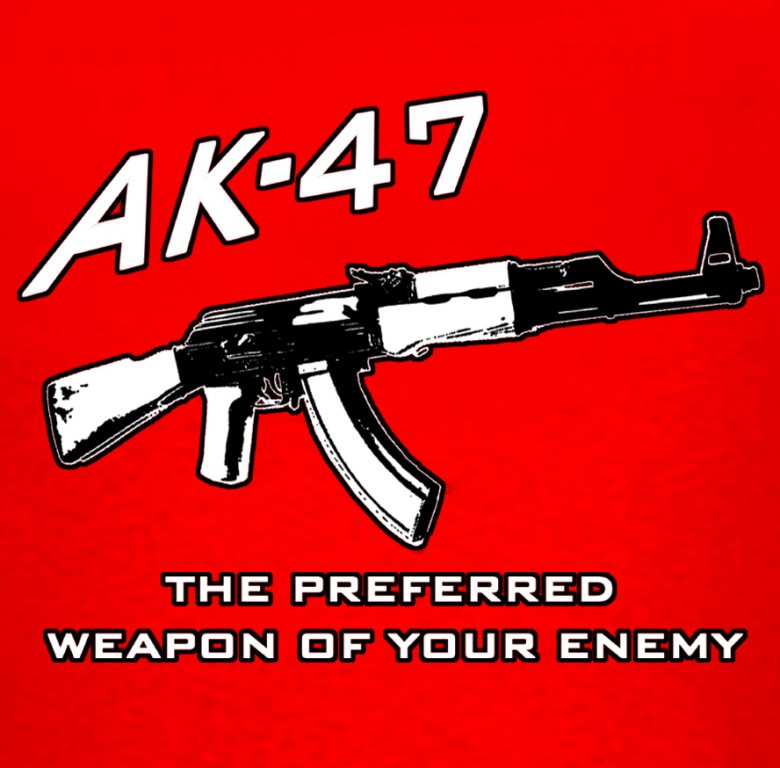We are clearing out some of the older designs with a 50% off sale. The Tiger 1 that was so popular when we first stated has been updated with a different font. It stll has the same Panzerkanpfwagen 6, the Tiger tank, design with a more dynamic title. Here are the pic’s of the old and new designs.


The red, white and black makes a very striking t shirt with the Tiger tank design. The supplies are limited to what’s on hand.
Bill
More info on the Tiger 1:
German heavy panzer of World War 2. The initial official German designation was Panzerkampfwagen VI Ausfhrung H (abbreviated PzKpfw VI Ausf. H, Ausfhrung is German for “edition”) but the tank was re-designated as Panzerkampfwagen VI Ausf. E in March 1943. The panzer also had the ordnance inventory designation SdKfz 181.
The Tiger I was in use from late 1942 until the German surrender in 1945. It was given its “Tiger” nickname by Ferdinand Porsche (the Roman numeral was added after the Tiger II was produced). The design served as the basis for other armoured vehicles, the Sturmtiger heavy self-propelled gun and the Bergetiger amoured recovery vehicle.
Tigers were capable of destroying the American M4 Sherman tank or British Churchhill tank IV at ranges exceeding 2,000 m. In contrast, the Soviet T-34 equipped with the 76.2 mm gun could not penetrate the Tiger frontally at whatever range, but could attain a side penetration at approximately 500 m firing the BR-350P APCR ammunition. The T34-85 tank 85 mm gun could penetrate the Tiger from the side at about range 1,000 m. The IS-2’s 122 mm gun could destroy the Tiger at ranges beyond 1,000 m.
fubar4
From a 30 degree angle of attack the M4 Sherman tank’s 75 mm gun could not penetrate the Tiger tank frontally at any range, and needed to be within 100 m to achieve a side penetration against the 80mm upper hull superstructure. The British 17-pounder as used on the Sherman Firefly, firing its normal APCBC ammunition, could penetrate frontally out to over 1,000 m. The US 76 mm gun, if firing the APCBC M62 ammunition, could penetrate the Tiger frontally out to just over 500 m, and could be at ranges in excess of 1,000 m to achieve penetration against the upper hull superstructure. Using HVAP ammunition, which was in constant short supply and primarily issued to tank destroyers, frontal penetrations were possible out to just over 1,500 m. It is worth mentioning that many of the penetration capabilities at longer ranges had little relevance compared to combat engagements of the real war, especially that which was fought in Western Europe, where battles seldom happened outside of one kilometer due to scattering and chance for human error, which is amplified greatly as range increases regardless of the ability of any cannon. For example, while a 17pdr could penetrate the front armor of a Tiger I at one kilometer in tests, during real combat, a 17pdr gunner would probably never find himself in a position to actually attempt such a feat.
As range decreases in combat, all guns can penetrate more armor (with the exception of HEAT ammunition, which was rare in World War II). The great penetrating power of the Tiger tank’s gun meant that it could destroy many of its opponents at ranges at which they could not respond. In open terrain, this was a major tactical advantage. Opposing tanks were often forced to make a flanking attack in order to knock out a Tiger.
The Tiger tank was first used in action in September 1942 near Leningrad. Under pressure from Hitler, the panzer was put into action months earlier than planned and many early models proved to be mechanically fragile. In its first action on 23 September 1942, many of the first Tiger tanks broke down. Others were knocked out by dug-in Soviet anti-tank guns. One panzer was captured largely intact, which gave the Soviets a chance to study the tank and prepare a response.
In the Tiger tank’s first actions in North Africa, the panzer was able to dominate Allied tanks in the wide-open terrain. However, mechanical failures meant that there were rarely more than a few in action. In a replay of the Leningrad experience, at least one Tiger tank was knocked out by towed British six-pounder antitank guns.
The panzer’s extreme weight limited the bridges it could cross and made drive-throughs of buildings, which may have had basements, hazardous. Another weakness was the slow traverse of the hydraulically-operated turret. The turret could as well be passed over manually, but this choice was seldom used, except probably for a fix of a few mils.
Early Tiger tanks had a top speed of about 45 km/h over optimal terrain. This was not recommended for normal operation, and was discouraged in training. Crews were told to not exceed 2600RPM due to reliability problems of the early Maybach engines at their maximum 3000RPM output. To combat this, the Tiger’s top speed was reduced to about 38km/h through the installation of an engine governor, capping the RPM of the Maybach HL 230 to 2600rpm (HL 210s were used on early models). Despite being slower than medium tanks of the time, which averaged a top speed of about 45 km/h, the Tiger still had a very respectable speed for a tank of its size and weight, being nearly twice as heavy as a Sherman tank or T-34 tank. The Tiger tank had reliability problems throughout its service life; Tiger tank units frequently entered combat understrength due to breakdowns. It was rare for any Tiger tank unit to complete a road march without losing vehicles due to breakdown. The tank also had poor radius of action (distance a combat vehicle can travel and return, in normal battle conditions, without refueling). Due to its very wide tracks, the Tiger had a lower ground pressure bearing than many smaller tanks, the most notable exception being the Soviet T-34 tank.
The Tiger tank’s armor and firepower, however, were feared by all its opponents. In tactical defense, its poor mobility was less of an issue. Whereas Panthers were the more serious threat to Allied tanks, Tigers had a bigger psychological effect on opposing crews, causing a “Tiger phobia”. Allied tankers would sometimes evade rather than confront a Tiger, even a tank that only looked like one, such as the Panzer IV with turret skirts applied. In the Normandy campaign, it could take four to five Shermans to knock out a single Tiger tank by maneuvering to its weaker flank or rear armour; the Soviet T-34s fared similarly against the German panzers, as had the German Panzer III earlier against the Soviet heavy tanks. An accepted Allied tactic was to engage the Tiger tank en masse, one attracting the attention of the Tiger crew while the others attacked the sides or rear of the vehicle. Since the ammunition and fuel were stored in the sponsons, a side penetration often resulted in a kill. This was a risky tactic, and often resulted in the loss of several Allied vehicles. It took a great deal of tactical skill to eliminate a Tiger tank.
Tiger tanks were usually employed in separate heavy panzer battalions (schwere-Panzer-Abteilung) under army command. These battalions would be deployed to critical sectors, either for breakthrough operations or, more typically, counterattacks. A few favored divisions, such as the Grossdeutschland or some of the low-numbered Waffen-SS divisions had a handful of Tiger tanks. The Tiger tank was originally designed to be offensive breakthrough weapon but by the time they came into action, the military situation had changed dramatically, and their main use was on the defensive as mobile gun batteries. Unfortunately this also meant rushing the Tigers constantly from location to location causing excessive mechanical issues. As a result there are almost no instances where a Tiger Batallion went into combat at anything close to full strength. Furthermore, against the Soviet and Western Allied production numbers, even a 10:1 kill ratio would not have been sufficient for the Tiger tanks. Some Tiger tank units did exceed the 10:1 kill ratio, including 13. Kompanie/Panzer-Regiment Grossdeutschland (16.67:1), schwere SS-Panzer-Abteilung 103 (12.82:1) and schwere Panzer-Abteilung 502 (13.08:1). These numbers must be set against the opportunity cost of building the expensive Tiger tank. Every Tiger tank built cost as much as four Sturmgeschutz III assault guns.
On 7 July 1943, a single Tiger tank commanded by SS-Oberscharfuhrer Franz Staudegger from the 2nd Platoon of 13th Panzer Company of 1st SS Division Leibstandarte SS Adolf Hitler engaged a group of about 50 T-34 tanks around Psyolknee (the southern sector of the German salient in the Battle of Kursk). Staudegger used all his ammunition in destroying 22 Soviet tanks, while the rest retreated. For this, Staudegger was awarded the Knight’s Cross.
On 8 August 1944, a single Tiger commanded by SS-Unterscharfuhrer Willi Fey from the 1st Company of sSSPzAbt 102, engaged a British tank column, destroying some 14 out of 15 Sherman tanks, followed by one more later in the day using his last two rounds of ammunition. sSSPzAbt 102 lost all of its Tiger tanks during fighting in Normandy, but reported 227 Allied panzers destroyed in six weeks.
The Tiger tank is particularly associated with SS-Haupsturmfurher Michael Wittmann of schwere SS-Panzerabteilung 101. He worked his way up, commanding various vehicles and finally a Tiger I. In the Battle of Villers-Bocage, he destroyed over two dozen Allied vehicles including several panzers; and single-handedly held up the advance of the entire 7th Armored Division until his panzer was knocked out and abandoned.
Over 10 Tiger tank panzer commanders had over 100 vehicle kills on their account, including: Kurt Knispel with 168 kills, Otto Carius with 150+ kills, Johannes Boumllter with 139+ kills, and Michael Wittmann with 138 kills.




